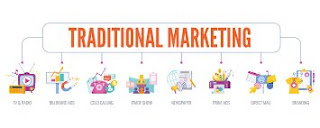The Ultimate Guide to Social Media Marketing: Boost Your Online Presence
In today’s dynamic marketing landscape, businesses have a wealth of tools at their disposal. Three giants stand out: content marketing, social media marketing, and traditional marketing. But with so many options, how do you know which one to use, or if you should use all three? The answer lies in understanding their strengths and weaknesses, and how they can work together to create a powerful marketing trifecta.
Content
Marketing: The Foundation of Trust
Content marketing is all about
creating and sharing valuable, relevant content to attract and engage a target
audience. This content can take many forms, from blog posts and articles to
infographics, videos, and podcasts. Unlike traditional marketing’s “push”
approach, content marketing relies on a “pull” strategy, attracting potential
customers by addressing their needs and interests.
Benefits
of Content Marketing:
Builds
trust and credibility:
By providing informative and helpful
content, you establish yourself as an expert in your field, fostering trust
with potential customers.
Improves
SEO:
Search engines love fresh,
high-quality content. Regularly creating content helps your website rank higher
in search results, leading to more organic traffic.
Generates
leads:
Valuable content educates potential
customers, positioning your brand as the solution to their problems. Calls to
action within your content can convert readers into leads.
Nurtures
relationships:
Content marketing allows for ongoing
engagement with your audience. By providing consistent value, you keep your
brand at the forefront of their minds.
Content
Marketing Challenges:
Time
commitment:
Creating high-quality content takes
time and resources. Consistency is key, so be prepared for a long-term
commitment.
Standing
out:
The content marketing space is
crowded. Finding your unique voice and niche is crucial to cut through the
noise and attract your audience.
Measuring
success:
ROI (Return On Investment) can be
harder to track in content marketing compared to traditional methods. Utilizing
website analytics and lead tracking tools can help.
Social
Media Marketing: The Conversation Starter
Social media marketing involves
using social media platforms like Facebook, Instagram, and Twitter to connect
with your target audience. It’s a powerful tool for building brand awareness,
promoting content, and fostering two-way communication with your customers.
Benefits
of Social Media Marketing:
Increased
brand awareness:
Social media allows you to reach a
vast audience and create a strong online presence.
Real-time
engagement:
Social media platforms are ideal for
fostering conversations and building relationships with your audience.
Targeted
outreach:
Social media advertising platforms
allow you to target your ideal customers based on demographics, interests, and
online behavior.
Cost-effective:
While paid advertising options
exist, organic social media marketing
requires minimal investment compared to traditional media.
Social
Media Marketing Challenges:
Staying
active:
Consistency is crucial in social
media. Regular posting and engagement are essential for building a following.
Algorithm
changes:
Social media platforms frequently
update their algorithms, impacting reach and engagement. Staying informed and
adapting your strategy is vital.
Negative
feedback:
Social media opens the door to
criticism. Having a plan for handling negative feedback is important.
Traditional
Marketing: The Established Powerhouse
Traditional marketing encompasses
tried-and-true methods like television commercials, print ads, billboards, and
radio broadcasts. Though sometimes seen as “old school” in the digital age,
traditional marketing still holds value, especially for reaching a broad
audience and establishing brand recognition.
Benefits
of Traditional Marketing:
Mass
reach:
Traditional media outlets offer the
potential to reach a large audience quickly and efficiently.
Brand
building:
Traditional marketing can create a
strong, lasting impression of your brand and its values.
Credibility:
Consumers often perceive established
media outlets as trustworthy, boosting the perceived credibility of your brand.
Targeting:
While the reach is broad,
traditional media can still be targeted to specific demographics through
strategic placement of ads.
Traditional
Marketing Challenges:
Cost:
Traditional marketing can be
expensive, particularly television and print advertising.
Limited
engagement:
Traditional methods are typically
one-way communication channels, with limited opportunities for direct audience
interaction.
Measurability:
Tracking the effectiveness of traditional marketing campaigns can be
challenging compared to digital methods.
The
Power of Three: Combining Strategies for Maximum Impact
While each approach has its own
strengths and weaknesses, the real magic happens when you combine them into a
cohesive marketing strategy. Here’s how these three giants can work together:
Content
fuels social media:
Use your high-quality content to
fuel your social media presence. Share blog posts, infographics, and video
snippets to spark conversations and drive traffic to your website.
Social
media promotes content:
Leverage your social media channels
to promote your content. Encourage sharing and engagement to amplify your reach
and attract new audiences.

.jpg)

.jpg)
.jpg)

Comments
Post a Comment